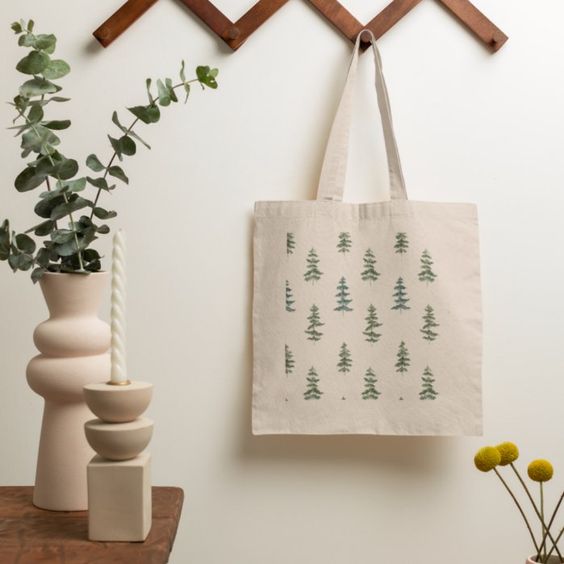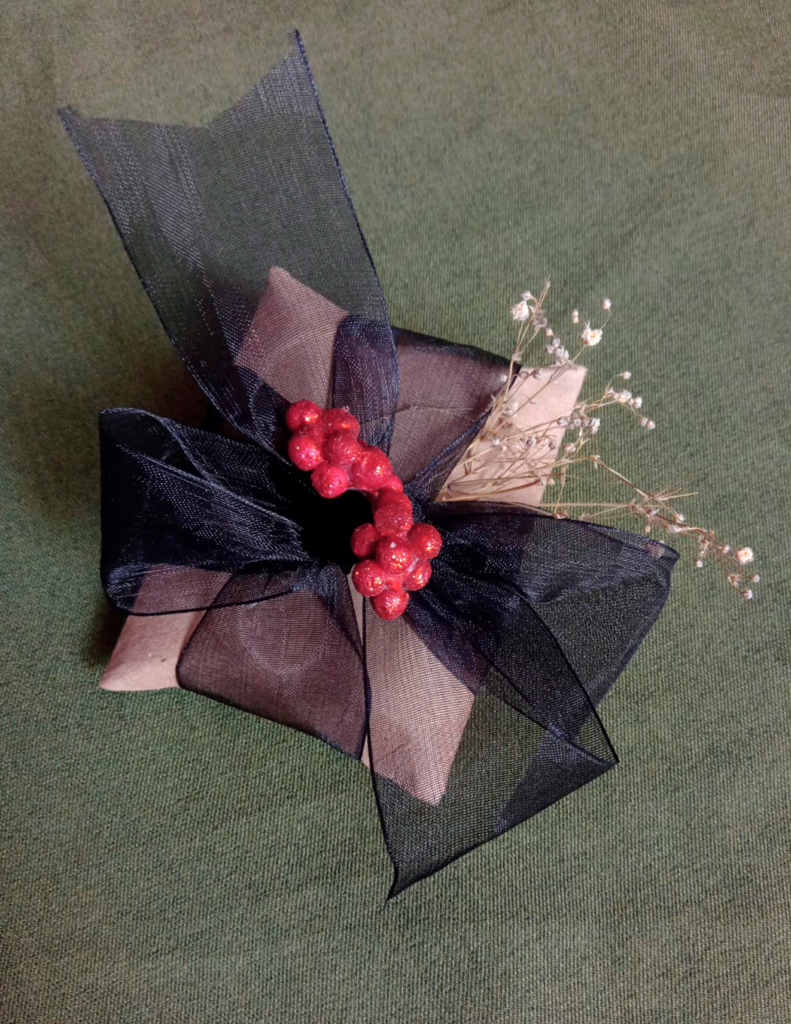-and other tips for sustainable holiday parties-

The holidays are getting closer, and many of us love this time of year; we love looking for gifts for our loved ones, we also love to decorate and organize all the preparations, but there is something that leaves us a little uneasy about Christmas shopping…
…what’s going on with the environment?
These festivities are very special as families come together, there is love and good wishes. Sadly, many good things have been reduced until it became a time of accelerated consumption. Yes, unfortunately, during the holidays, there is an increase in the practice of bad habits such as incorrect garbage disposal and excessive water and electricity waste, practices that severely damage the environment.
Keep in mind these factors that occur during the holidays, which we rarely pay attention to:
- During the Christmas holidays, pollution increases alarmingly, especially in big cities, becoming a critical situation due to environmental and health consequences.
- Transport in private vehicles become more frequent, as we use them to go Christmas shopping and move from one place to another. This contributes to poor air quality in cities.
- During December, it is estimated that there is an increase in the number of daily waste by 25%. The boxes, ribbons, and wrappers that decorated the gifts end up becoming garbage.
- Christmas lights carefully arranged around houses and left on throughout the day – including night – also imply unnecessary energy waste.

To appreciate these holidays, it is now more vital than ever to change our habits. I assure you that following these tips will help you move away from excessive consumerism, live the holidays with greater serenity, and also contribute to your pocket.
We can choose to give environmentally friendly gifts, and why not package them in environmentally friendly, even custom-made packaging? Because of this, we’re providing you some advice, methods, and ideas on this particular occasion to help you make the most creative and environmentally friendly gifts possible! So gather everything you intended to discard, paper, plastic, fabric—they make excellent resources for recycling—and let’s get to work!
1. Kraft Paper
Most types of wrapping paper cannot be recycled. Glossy laminated paper and anything shiny, and metallic-looking contaminates the entire batch if mixed with recyclable paper. This is where kraft paper comes in: it is biodegradable and recyclable.
- Kraft paper is a natural and compostable material.
- It is unbleached to minimize chemical treatments and preserve the natural color of the wood.
- Like tree leaves, paper naturally breaks down into cellulose fibers in just a few weeks and can be completely absorbed by the environment without any impact on the ecosystem or human health.
Let your creativity shine when decorating a gift wrapped in kraft paper, it will also give your gifts a lovely rustic look. To complement for an extra festive touch, you can add some natural materials such as pine cones, dried plants, or dried orange slices.
If you want to avoid the tape, you can keep the paper in place with ropes, threads, or ribbons.
Keep in mind that butcher paper may look like craft paper, but isn’t recyclable because it’s waxed.
And while Kraft paper is completely biodegradable, this doesn’t mean you shouldn’t dispose of it properly! Where possible, reuse packaging or place it in a recycling bin.

2. Furoshiki

Furoshiki is originally a Japanese technique traditionally used to transport belongings, but has now become a popular and eco-friendly method of wrapping gifts in other cultures as well. To wrap a gift in furoshiki, all you need is a square of fabric and some basic folding skills.
Let’s see how you can wrap a gift in furoshiki:
To make the most of this technique, you can use a piece of fabric you already have. You can look for forgotten clothes in your closet or open that drawer full of scarves that you don’t use.
If you want to keep it as simple as possible or simply don’t have the patience to decorate, furoshiki is the right option for you. When wrapping a gift in furoshiki, you’ll find that no extra decorations are needed. Just find a nice fabric and you’re done.
3. Gift bags and gift tote bags
This is an excellent tip that can be applied in a variety of ways and is surprisingly simple:
- First of all, don’t we receive gift bags made of cardboard, plastic, or paper every year? Well, our first way to collaborate with the environment is to save these bags to reuse them next year. That bag that they gave us with a present can now be used to give something to someone else.
Don’t worry, this is not a boring idea, if you think your gifts lack a little style you can add bows made of ribbon or discarded fabric, and finally, you can add subtle natural decorations or a beautiful note written by you.
- Furthermore, who wouldn’t be delighted to receive a gift wrapped in a sustainable bag? We can make a fully customized tote bag or handbag that the receiver will treasure for many years. It will resemble a two-for-one gift! If you enjoy doing crafts and taking your time wrapping presents, you can make reusable, environmentally-friendly fabric bags.
Look through your closet for anything that is just gathering dust that you can use again, such as pillowcases, scarves, sweaters you no longer wear, or anything else you believe has potential, but doesn’t appear worn out yet.

You can follow this tutorial: tote bag: upcycle a t-shirt to guide you when making a bag using an old garment. Likewise, you can make any modifications that you think are necessary so that it is to your liking!
Now that you’re aware, save all the gift bags and cords you receive, so you won’t have any worries about buying new ones and generating more waste. And of course, if you decide to buy a gift bag after all, do your best to make sure it is reusable.
4. Wrapping paper from newspapers or magazines

Even though more and more people are reading their news online rather than in print, 28.6 million copies of newspapers are still printed every day. Many of us also have a fair amount of newspapers at home that are just waiting to be recycled and reused.
There are quite a few ways to turn this simple and inexpensive idea into something meaningful. Christmas is showtime for the print newspaper. With the right decoration, newspapers can look fantastic. For example, go through your stack of newspapers and look for an interesting or funny article, or find an unsolved crossword puzzle and use it as a place to write your Christmas greetings. Even if you don’t have newspapers, most likely some of your friends or family can share some that they no longer use.
To give it an even more personalized touch you can use a comic or magazines you have at home, and hey! Another tip that I can give you as a designer is to use paper from recycled sewing patterns or that you no longer use.
You can also use a combination of several techniques to make a collage with motifs that match the receiver.
5. Gift boxes
This is the time to go through all the gift boxes in storage and any other reusable boxes you have (for example, cardboard delivery boxes). If they don’t look so good anymore, there are ways to renew them. Use some of the techniques we already mentioned such as kraft paper, newspapers, or saved tissue paper to make the gift boxes look new.
Another option is to create an environmentally friendly present box yourself, using materials like cardboard tubes from toilet paper or paper towel rolls. Below you can see an example of what these cute little boxes look like made of a material that we normally throw away.
As it’s quick and simple and requires neither scissors nor tape, this gift-wrapping technique is suitable for even the youngest of participants. All you have to do is fold the roll’s two ends.
It won’t be easy to determine how the gift box was created if you decorate it with the appropriate eco-friendly accents (such as some extra ribbon, pine twigs, or whatever else you want).

6. Glass jars

All you have to do for this charming present wrapping idea is look on the shelves to find a glass jar waiting to be reused.
If you don’t have jars at home, remember to save jars of pickled products for the next time you eat them. Or, again, just ask – your family and friends will definitely have some spare jars you can use.
Decorate the jar with carved wood ornaments, candy canes, cinnamon sticks, or eucalyptus leaves to give it a unique touch.
If you have leftover fabric from the furoshiki wrapper, cover the jar’s top with it and secure it with twine.
We know that not all gifts fit in a jar, but it is a good option for those that are small in size. You can also use this option to give homemade gifts, such as jam or small DIY kits.
7. Natural decorative elements
And lastly, this advice works for any gift, no matter what method you choose. Rather than using ribbons or stickers to decorate your gifts, opt for dried citrus fruit or sprigs of thyme/leaves instead.
This is a fantastic and guilt-free way to elevate your gift’s aesthetic and they can be easily composted or put in the garden after use.
- Moreover, a large portion of the products thrown away over the Christmas season fall into the category of recyclable inorganic raw materials, which include paper, cardboard, glass, some plastics, and textiles. This is why it’s crucial to separate waste into categories other than organic and inorganic. When waste tends to increase, taking this measure during the Christmas season helps keep the issue from worsening.

Reduce, recycle, and reuse are the actions to take to lower the accumulation of garbage at Christmas.
So we hope that this information can help you learn more about these habits that help reduce the impact on the environment, pollution, and energy waste.
The best part is that you may use these suggestions for birthday presents and other special events all year long.
Once you’ve used these cute gift-wrapping ideas to make your holiday celebrations more eco-friendly, I invite you to make it a habit for all gift-giving occasions. Now that you know all these techniques you will have saved materials to use when necessary. Write down the ideas you liked the most, try them again, and share them with your friends and family.
As I said before, we are on the path to becoming more sustainable, but we also know that every small step counts. Therefore, let’s work on our own plans to be more ecological and wrap our gifts most originally. We want to encourage you to also take these measures, which are also much more personal since they require your time and creativity!
Don’t forget to share what you’ve learned with your friends and family. Maybe they’ll try it too!






Hola,bastante interesante la información,y maravillosas maneras de envolver nuestros regalos,me encantó felicidades por el artículo